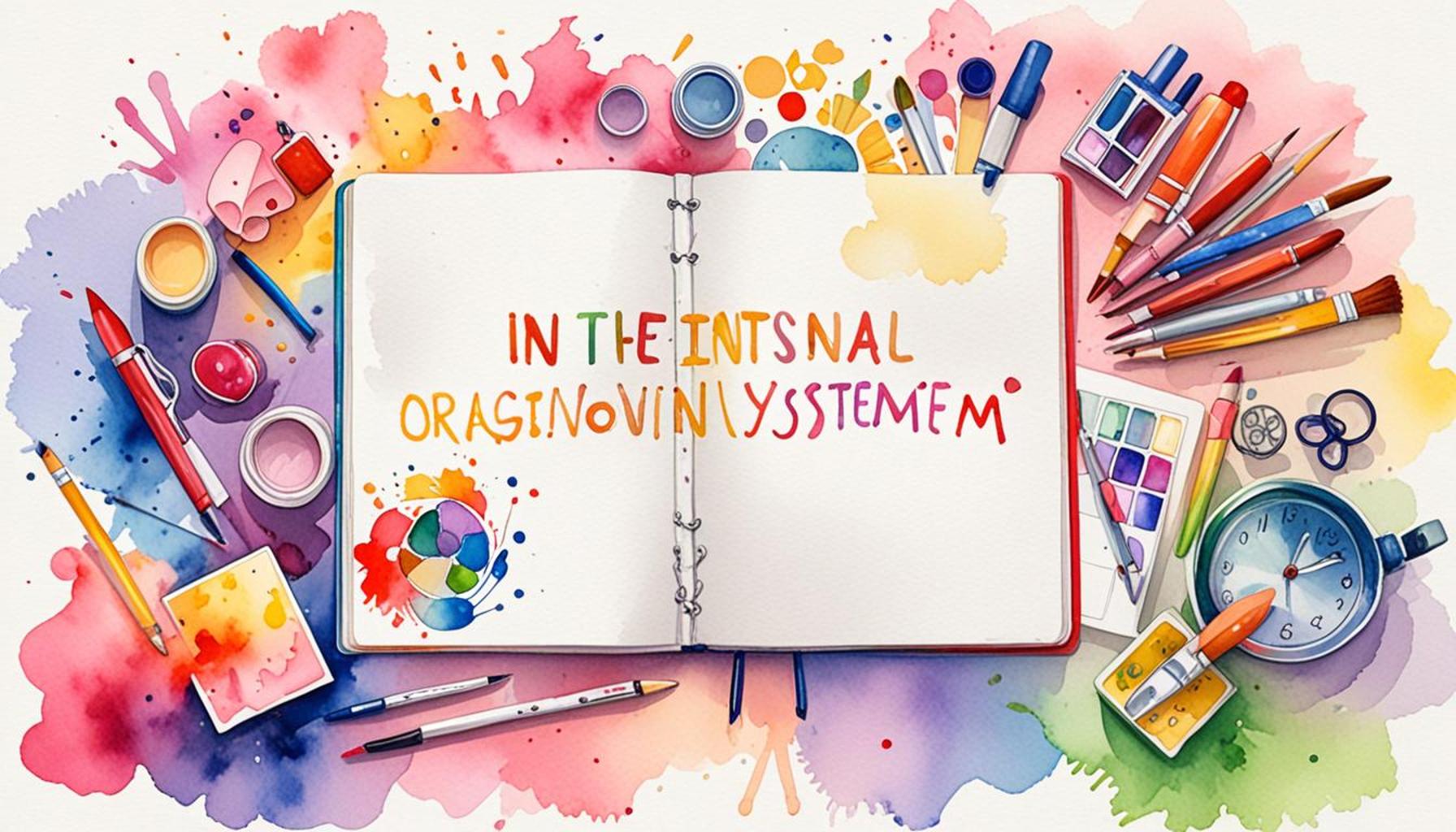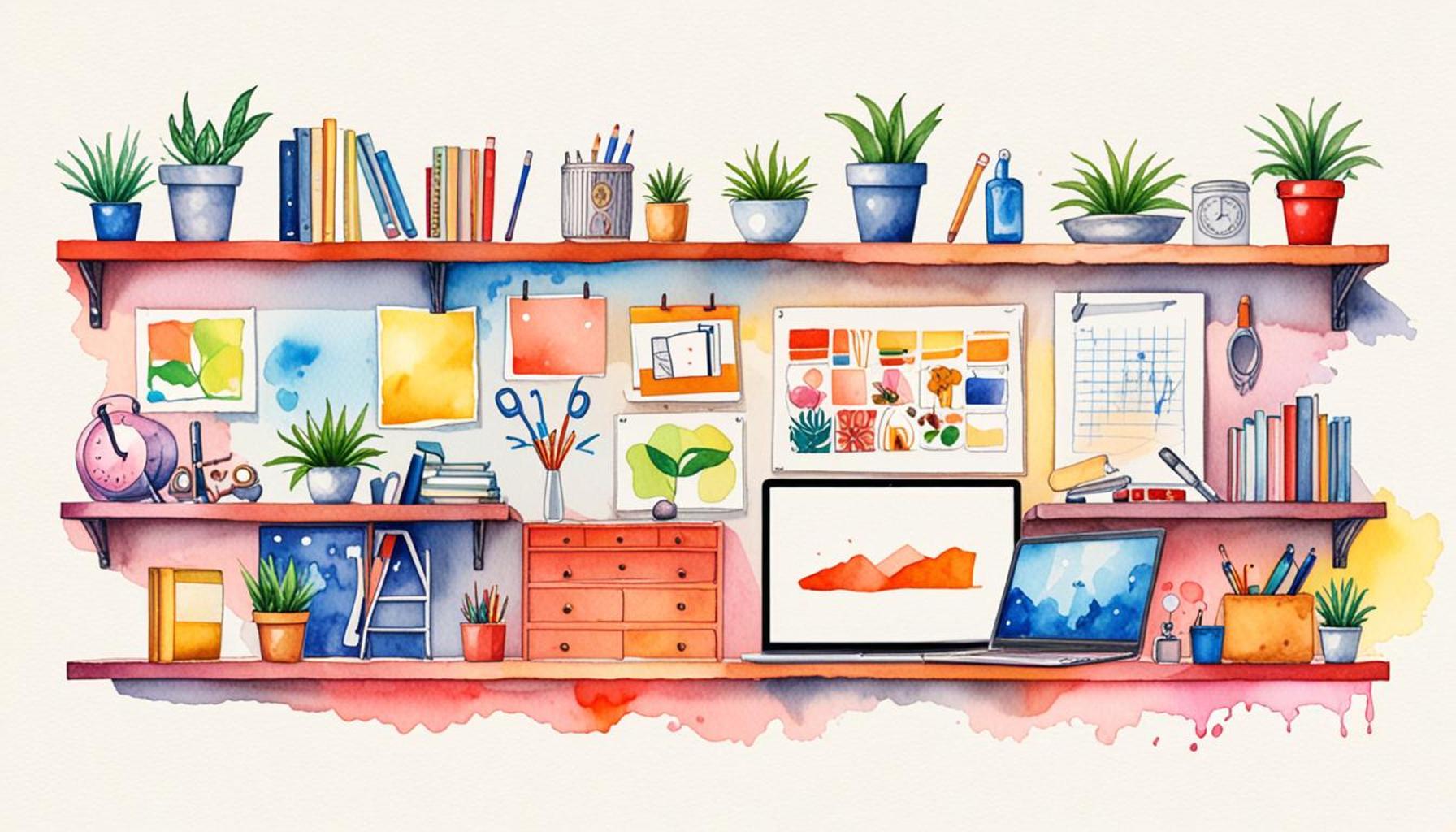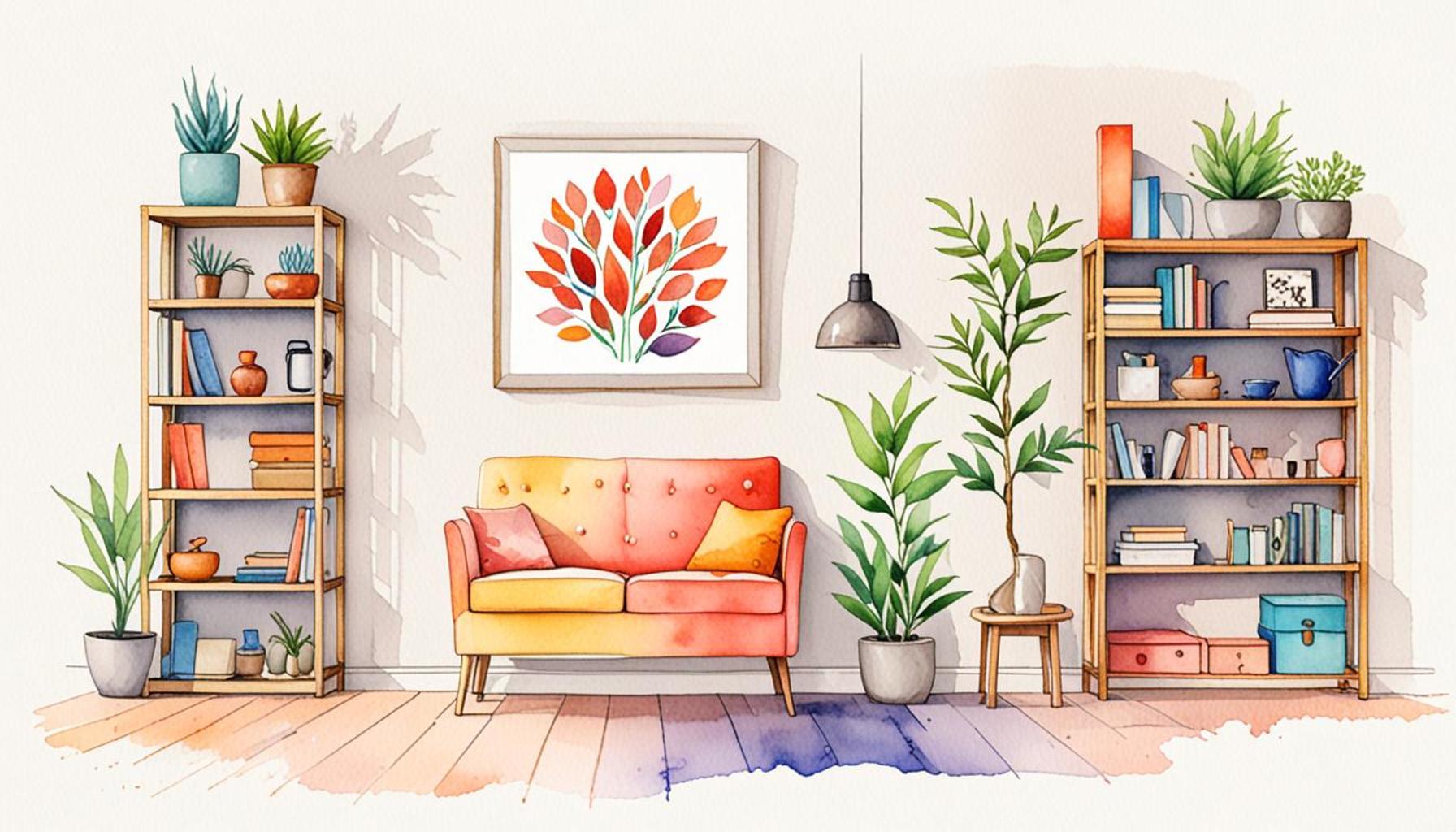The Importance of Intentional Design in Creating Effective Personal Organization Systems

The Power of Intentional Design in Personal Organization
In today’s fast-paced society, where notifications ping and distractions lurk around every digital corner, establishing effective personal organization is paramount. The concept of intentional design is integral in developing systems that facilitate our daily lives rather than hinder them. It transcends mere organization tools such as planners or apps; intentional design involves crafting a comprehensive framework that streamlines your tasks and enhances productivity.
When delving into successful personal organization, there are key features that can make a substantial difference:
- Customization: An effective organization system should reflect your individual preferences and requirements. For instance, a busy parent might benefit from a family calendar that includes not just personal appointments but also school events, sports practice, and chore schedules. Conversely, a student may require an academic planner that has sections for class schedules, assignment deadlines, and project tracking. By adapting tools to your unique lifestyle, you create a system that resonates with your specific needs.
- Clarity: Ambiguity can quickly derail productivity. A well-designed system should have clearly defined categories and tasks. For example, labeling folders as “Urgent,” “To Do,” and “Future Tasks” can simplify decision-making and time management. Clarity ensures you spend less time deciphering where things belong and more time executing your responsibilities.
- Accessibility: Having your organizational tools within easy reach is vital for ensuring efficiency. A digital app that syncs across all devices allows for seamless access, whether you’re on your smartphone during a commute or on your laptop at home. Likewise, physical organizers should be placed in locations that support your daily activities, ensuring that you can quickly jot down thoughts or refer to schedules.
Understanding that intentional design is not just a matter of aesthetics but a fundamental aspect of user experience is key. Studies indicate that optimizing environments people interact with can lead to significant improvements in productivity—by over 20% in some cases. This reveals how essential thoughtful organization is for effective time management and mental clarity. As we delve across the intricacies of this topic, it is worth considering how intentional design affects cognitive functions and aids in maintaining focus amid chaos.
Throughout this article, we will take a closer look at:
- How intentional design can positively impact cognitive abilities and mental organization.
- Real-world examples of successful, intentionally designed personal organization systems that inspire efficiency.
- A step-by-step guide to enhancing your organizational framework to align with your individual goals.
Join us as we uncover the transformative influence of intentional design on your personal efficiency, leading to not just improved productivity but also greater overall well-being. With these tools and insights, you will be empowered to master your organizational systems and thrive in an increasingly chaotic world.

DISCOVER MORE: Click here to find out how less can be more
Unlocking the Cognitive Benefits of Intentional Design
One of the most significant advantages of implementing intentional design in personal organization systems is its profound impact on cognitive abilities. Research has shown that structured, well-thought-out frameworks can enhance focus, foster creativity, and improve overall mental well-being. The human brain thrives on organization, and when information is systematically categorized, it becomes significantly easier for individuals to process and retrieve it. This is particularly important in an age where information overload is the norm, and sifting through chaos can feel overwhelming.
When exploring the cognitive benefits further, consider the following elements that intentional design can enhance:
- Memory Retention: Neuroscience has demonstrated that organized information can be more easily remembered. By categorizing tasks into manageable sections, such as “Immediate Priorities” and “Long-term Goals,” you not only create a clearer path to achieving these goals but also improve the odds of retention in your memory. This is especially crucial for students, professionals, and anyone juggling multiple responsibilities.
- Time Management: A well-designed organization system aids in the efficient allocation of time. Time-blocking methods or specific deadlines outlined within your planner can encourage discipline and prompt individuals to focus on one task at a time. This structured approach minimizes distractions, allowing for deeper engagement with each task and ultimately leading to higher productivity levels.
- Stress Reduction: A cluttered environment—both physical and digital—can lead to increased anxiety and decreased motivation. Intentional design encourages streamlined processes by reducing unwanted clutter, thus providing a serene space that promotes calmness and mental clarity. Studies have found that individuals who work in organized environments tend to report lower stress levels and increased satisfaction with their productivity.
One practical application of this cognitive insight can be seen in digital tools designed for personal organization. Apps like Todoist or Notion utilize intentional design principles to promote clarity and ease of use, allowing users to create customized workflows that reflect their unique tasks and priorities. Such tools often come equipped with features that prioritize user experience, eliminating confusion and simplifying decision-making.
Considering this connection between intentional design and cognitive function, it becomes evident that creating an organization system is not merely about practicality; it also involves understanding how these systems influence our mental faculties. By harnessing the power of intentional design, individuals can cultivate an environment conducive to productivity and creativity, rather than one fraught with chaos and clutter. With this foundational understanding, let’s delve into real-world examples of effectively designed personal organization systems that inspire productivity and offer practical solutions for daily challenges.
| Advantages | Benefits |
|---|---|
| Enhanced Clarity | Intentional design clarifies processes, making systems more intuitive. |
| Increased Efficiency | Intentionally designed systems streamline tasks, minimizing wasted time and effort. |
| Boosted Productivity | Well-structured organization systems enhance focus, allowing for deeper concentration on important tasks. |
| Personalization | Systems can be tailored to individual needs, increasing ownership and motivation. |
Intentional design in personal organization systems isn’t merely a stylistic choice; it plays a crucial role in optimizing both individual and team efficiency. By focusing on clarity, the user can navigate their systems with ease, ensuring that each step in their workflow is well-defined and purposeful. Moreover, systems designed with efficiency in mind allow users to complete tasks faster, leading to less frustration and higher output.The professional landscape continuously shifts, demanding a responsive approach to organization. As such, boosting productivity through these intentional designs becomes not just beneficial but necessary in today’s fast-paced environment. This brings us to the aspect of personalization; adaptable systems cater specifically to users, aligning with their personal rhythms and work styles, ultimately fostering a sense of ownership and engagement. It’s this harmony between design and functionality that sets the foundation for effective personal organization systems, where users can truly thrive and excel.
DISCOVER MORE: Click here to learn about mindful living
The Role of Intentional Design in Enhancing User Engagement
Beyond its cognitive advantages, intentional design plays a pivotal role in capturing user engagement and facilitating effective personal organization systems. It is widely recognized that a well-designed organization tool is not only functional but also aesthetically pleasing. The balance of form and function has a significant impact on how consistently individuals utilize these systems. When the visual components of an organization system—color schemes, layouts, and accessibility—are aligned with the user’s preferences, it inadvertently fosters a deeper connection and commitment to the system.
The following aspects illustrate how intentional design contributes to enhanced user engagement:
- User-Centric Design: An effective personal organization system should prioritize the needs and behaviors of its users. By tailoring features that resonate with individual preferences—such as customizable dashboards and intuitive navigation—users are more likely to integrate these organization systems into their daily lives. A user-centric interface creates an inviting experience that encourages regular interaction and task completion.
- Visual Hierarchy: The design principle of visual hierarchy guides users’ attention towards crucial information. By strategically arranging tasks and deadlines, individuals can identify priorities at a glance. Color coding, bold text, and thoughtfully sized fonts can delineate urgent tasks from secondary ones, enabling users to make decisions efficiently. This not only reduces the time spent seeking information but also empowers users to respond to tasks promptly.
- Gamification Elements: Incorporating elements of gamification into personal organization systems can significantly boost engagement. Features such as progress tracking, achievement badges, and rewards for task completion turn mundane tasks into motivating challenges. For instance, applications like Habitica transform to-do lists into interactive games, effectively increasing user commitment while promoting a sense of accomplishment.
Furthermore, exploring the successes of businesses that prioritize intentional design can shed light on best practices for personal organization. Companies such as Apple and Tesla have revolutionized user experience by designing products that not only function extraordinarily well but also possess an aesthetic quality that elicits emotional responses from users. This same design philosophy can be adopted on a personal level through organization systems that speak to one’s individuality and values.
Evidence supporting the necessity of engaging design is steeped in user retention statistics. Research indicates that applications that are visually appealing and easy to interact with can enhance user retention rates by up to 20%. For personal organization systems that regularly demand user engagement, this data underscores the importance of prioritizing not just what the tools can do, but how they make users feel while doing it.
Recognizing user engagement as a cornerstone of effective personal organization systems lays the groundwork for innovative approaches that draw on the lessons learned from successful design. With insights into how intentional design affects user retention and satisfaction, we can appreciate the versatile applications of this concept in both personal and professional spheres. Let us now examine the practical implications of design principles in crafting personalized organization strategies that navigate the balance between efficiency and enjoyment.
DISCOVER MORE: Click here to unlock space optimization strategies
Elevating Personal Organization Through Intentional Design
In conclusion, the significance of intentional design in crafting effective personal organization systems cannot be overstated. As we’ve explored, the principles of user-centric design, visual hierarchy, and gamification not only enhance functionality but also cultivate emotional connections between users and their systems. The strategic application of these design elements paves the way for greater user engagement, allowing individuals to establish routines and maintain productivity with ease.
The evidence clearly illustrates that personal organization tools which prioritize engaging aesthetics and intuitive functionality result in higher user retention rates. By ensuring systems are not only operable but also enjoyable to interact with, we empower individuals to take ownership of their time and tasks. With research showing that appealing designs can improve user commitment by as much as 20%, this aspect of intentional design is crucial in fostering long-term habits and cultivating self-discipline.
As we move forward, embracing innovative design philosophies similar to those championed by industry giants can serve as inspiration for anyone looking to enhance their organization strategies. Therefore, it is time to think critically about personal organization systems and the profound impact that intentional design can have on our daily lives. By crafting systems that harmonize efficiency with enjoyment, we ensure that our organizational endeavors are not merely tasks to check off, but rather, empowering experiences that enrich our overall well-being. The journey towards excellence in personal organization is only just beginning, and intentional design is the compass that will guide us through.


